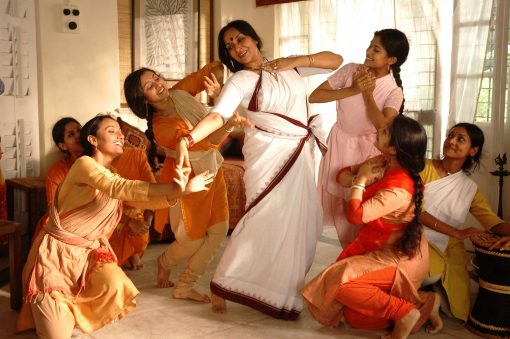
In simple words, self-reflexive cinema can be called “cinema within cinema” though it is not as simple and as straightforward as it sounds. Every director, over time, absorbs into his/her system, a certain sense of narcissism and this drives them to make self-reflexive films which may not really be autobiographical in a personal sense, but may subtly or covertly suggest different aspects of the filmmaker and his filmmaking through a self-reflexive film. The audience gets an insight into cinema as an art form, cinema as a mirror to society, cinema that reflects social concern and cinema as a tool of expression for the filmmaker.
Many filmmakers, wittingly or unwittingly, tend to make at least one self-reflexive film-within-a-film at some time or another. Most Indian filmmakers use this self-reflexive style to explore the psyche of people involved in films, the jugglery that goes on, the stakes involved in changing lives and lifestyles and more importantly, to involve the audience in this politics of representation.
For most filmmakers, a film-within-a-film is not autobiographical. Guru Dutt’s Kaagaz Ke Phool (1959) is perhaps the most telling among self-reflexive films made in India. It is a subtle tribute to the glorious days of the studio era, using its history between the 1930s and 1940s as its backdrop. An early shot in the film reveals Suresh leaning from the balcony of a cinema hall where Vidyapati, (1937), an unforgettable musical romance, is playing to a full house. The films that Suresh is shown making or having made in the film are films that actually exist in the archives of Indian cinema. The film we see actually being shot within the studios is Devdas. This marks a moving amalgam between fiction and cinema history, also interpreted as a tribute.
Cinema-within-cinema also draws the attention of the spectator to filmic codes, e.g. camera angle, montage, colour, music, sound and so on. The presence of cinematic items, objects and other paraphernalia, such as the movie camera, the boom, the lights, the make-up, the costumes, the make-up room, huge posters of films and film stars, the back office of a studio classify a self-reflexive film into a special genre.
Mrinal Sen’s Akaaler Sandhane is a scathing indictment on the pretentious arrogance of a film director making a feature film on the Bengal famine. Akaaler Sandhane (In Search of Famine – 1980) is perhaps the only self-reflexive film where Sen deals with a film-within-a-film probably to point an accusing finger at the film fraternity, which includes himself. It opens and closes with a voice-over mouthing lines without tone or pitch. The story is about a group of film people travelling in a bus towards a village to location shoot a film based on the Bengal famine of 1943. As shooting is about to begin, two things happen: one, we discover that the man-made famine of 1943 is still very much present in the village; two, the arrival of a film team from Calcutta that orders sumptuous food for the team, sends the prices of vegetables, poultry, eggs and fish shooting up, further escalating the near-famine situation in the village. There is a blurring between the past and the present with the narrative zeroing in on Durga, a local girl roped in to do a role that is almost identical with her real life situation. The initially awe-struck villagers now turn their wrath and anger towards the shooting team. They leave in a huff, the shooting incomplete. “We will shoot the rest in the studios,” says the director, making us question, “Why then, did they come to the village in the first place?” Was it a rural adventure trip for them thinly veiled as ‘shooting?’ Or was it an ego trip?
Few Indian filmmakers however, have used the genre of self-reflexive cinema in many ways like Rituparno Ghosh has. The main objective of his self-reflexive films, by his own admission was “to point a finger at myself and show how selfish a director can be while he is planning, conceiving, casting and shooting his film. Rituparno used this self-reflexive style to explore the psyche, the attitude and the approach of people involved in films, specially the director. This self-exploration, self-questioning, self-critique runs like a strong under-current in many of his films beginning with Asookh, going on through Utsab, Bariwalli, Shubho Muhurat, Khela, Abohomaan, Aar Ekti Premer Golpo (not directed by him) The Last Lear and to a small extent, Titlee.
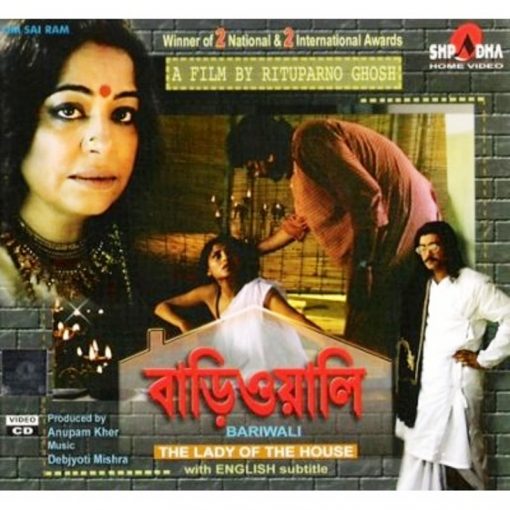
There is a certain degree of scathing critique that goes to the point of ridicule, in the way that Ghosh, in Bariwali, takes the so-called art film director Dipankar, twists him, tries to perfect him, inflates and deflates him, mercilessly peels off the mask of the ‘creative, committed artist’ that he wears, to drop him by the wayside like yesterday’s newspaper. The ‘creative genius’ escapes open exposure as a ruthless exploiter of the loneliness of two women to gain his ‘creative’ ends. Dipankar, the director, turns out to be an actor far more gifted in the art of subtle histrionics and subtler seduction than in directing a Tagore classic like Chokher Bali. All this while, however, Ghosh is telling us a very different story. He is exploring the multi-layered tragedy of loneliness in a single woman, Bonolata, forced to live alone with an old retinue and a young maid for company. The largeness of the mansion she lives in – its huge corridors, the unending terrace, the large rooms, the family temple in the courtyard, the balconies, magnify her loneliness and her vulnerability and offer the director with the ideal mansion in which to shoot a portion of his film.
Before she knows it, Bonolata falls in love with this soft-spoken, attractive director who asks her permission to shoot part of his film in her beautiful home. The director takes advantage of his mesmerising charm. He pretends to look deeply disturbed when she waives the rentals for the shoot over a birthday lunch she has specially prepared for him. Bariwali is a class apart. The director persuades Bonolata to do a small scene in the film. With great hesitation and anxiety, she agrees. After the crew has left, she waits for the film’s release. The day her maid buys the tickets to a show, she gets a letter from the art director who informs her that her scene had to be edited out of the final print.
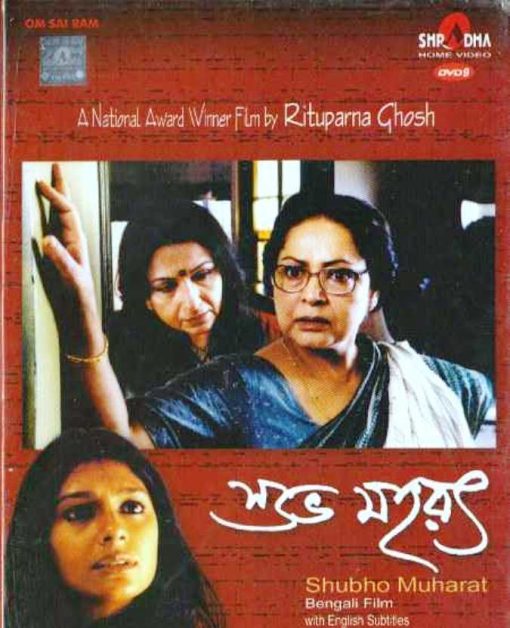
Shubho Muhurat is a thriller inspired from Agatha Christie’s The Mirror Crack’d From Side to Side. But Ghosh turned the story around and wrote in a sub-plot with a journalist falling in love with two men. But with the protagonist being a once-famous and beautiful film star with starry airs and now producer of a new film, Ghosh did not miss this opportunity to offer the audience a glimpse into the world of marginalised film people.
If you set aside the murders and concentrate on the details, you get a close insight into the tragic lives of people who are a part of the film industry. You get to watch the process of filmmaking, the ambience within the studio sets, a star-studded muhurat party, compromises small people are forced to make, the complete erasure of a small-time actor reduced to cater food on the sets and a once famous director now stamping envelopes. These are pointers to the glass-like fragility of the tinsel world where careers can often be made and broken for any flimsy reason and merit or talent has no role to play in this idiosyncratic world. It is certainly not one of Ghosh’s best films because his personal inputs into the script detracted from the suspense and the murder. But it should be remembered as a film that probes deep into the tragedy of people in the fringes of the industry.
Khela’s director-within-the-film Raja goes one step beyond what the director in Bariwalli did to the lonely woman’s emotional vulnerability. Raja Bhowmik, making his first feature film, does not stop at kidnapping the child he thinks will fit into his directorial conception of his protagonist, Nalak. Interestingly, he does this in connivance with the boy he chooses to play Nalak the main character of his film.
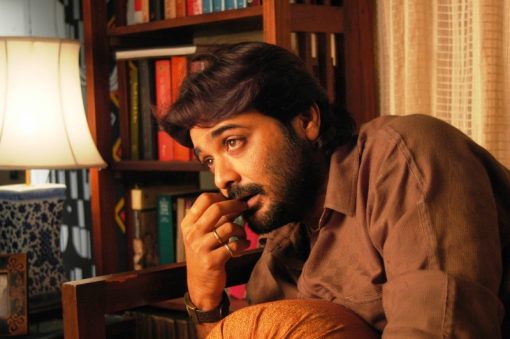
Once the “kidnap” is effected, Khela embarks on a jerky, rickety, rough journey, – geographical, emotional and physical, moving within and among the members of the production unit, united in their mad camaraderie yet completely lacking in organization and method, trying to cope with the naughty pranks of the boy who makes things terrible for the shoot. Yet, just beneath the surface, there is this growing bond between the director and his child actor.
He does not know how to manage a naughty child actor. He even gives wrong directions to the police when they come in search of the missing child. He is so selfish and irresponsible that he does not care about the traumatic impact this ‘kidnapping’ will have on the child’s parents and about the consequences of his crime on the film unit and on the film itself. Rituparno throws up the extremes a creative filmmaker can go to, not realising the trap he is falling into. Raja fails to complete the film and this marks Raja’s coming to terms with the humane side of life, his child actor Abhiroop unwittingly, with his child-like naiveté and innocence, having driven him to this realisation.
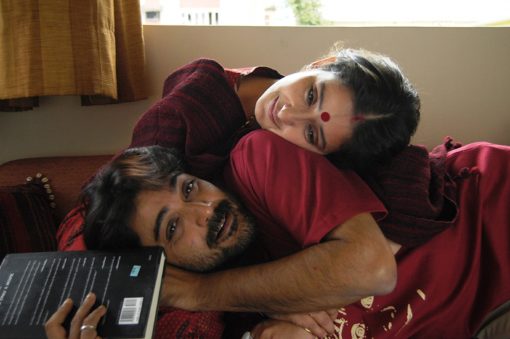
The director-actress relationship spilling over from the studio lights into their personal lives is well-known. Abohomaan however, approaches the director-actress relationship differently. The film constantly shifts between and among its three time zones and the metamorphosis in the characters and their interactions. In the end, one is left questioning whether there was a relationship at all or whether it was a figment of the gossip mill’s fertile imagination, fired by speculations within the family and nurtured by rumours in the film industry. Each of the characters involved – director Aniket, his dignified and accomplished wife Deepti, their grownup son Apratim and the young starlet Shikha, have different perspectives about the ‘scandal’ that rocked the family and brought Deepti’s contented world crashing down.
Abohomaan plays between onscreen and off-screen space, dialectic between withholding and revealing audiovisual information, between restricting our vision and expanding it. It creates blind spots like flashes of the black screen to signify the dying Aniket’s state of delirium when he is constantly talking about ‘shots’, ‘scripts’, ‘make-up’. It is richly invested with a now-you-see-it-now-you-don’t quality. Ghosh chooses to show us only so much, blocking our vision in order to intensify our awareness and anticipation of what we cannot see. The only problem with the film is its Nati Binodini segment which few in the audience will be able to draw parallels from. Binodini Dasi (1863-1941)’s life story has been staged over and over for a long time mainly because the story of her life is more dramatic than the ones we read in fiction and has more twists and turns than a film script. The ‘nati’ in her name means ‘actress.’ She has carved an immortal place in the history of Bengali theatre not only for her talent and her versatility as an actress, but also for the sacrifices she made in the cause of theatre, her first love. But how many Bengalis nourished on Ghosh have even heard her name?
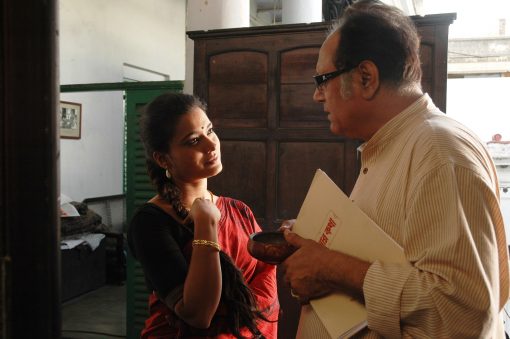
The Last Lear, written and directed by Rituparno Ghosh, is not an adaptation of the Shakespeare play. Why does Ghosh choose to name his film after the Shakespearian tragedy? The realisation begins to sink in and the links appear much after the film is over. No, it is not Amitabh Bachchan this time. It is Harish Mishra, more popularly known as Harry, who haunts you with his eccentricity, his obsession with Shakespeare in general and King Lear in particular, his arrogance about the great Shakespearian stage actor he once was, and the past he is steeped in, trying his best to wipe out the 30 years of forced hibernation.
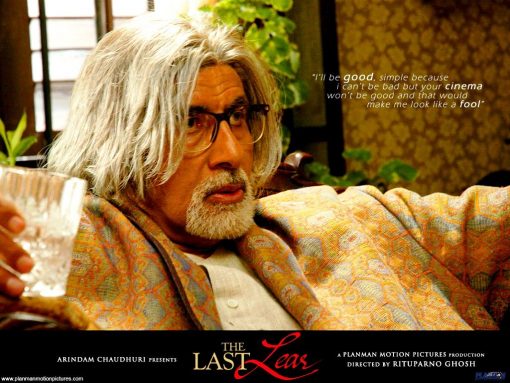
Siddharth Kumar (the director within the film)’s film The Mask has nothing to do with Shakespeare’s play. It is called The Mask and carries the intriguing slug-line “because faces sometimes lie”. Siddharth soon convinces his ‘Harry Baba’ to do his first screen role and Harish accepts it as a tribute to their friendship. Siddharth takes his time to woo the reluctant actor by sharing a drink with him at leisure, allowing the old man to re-enact soliloquies from his Shakespearian characters, and even installs a close-circuit television in Harry Baba’s apartment.
Once shooting begins, Siddharth becomes a different person, distanced, aloof and professional to a fault, raising metaphorical questions about title of the film – The Mask. Who, one begins to ask oneself, is wearing the mask? Is it the clown who dies in the end of the film? Is it Harish who peels off his mask allowing the real person to be seen, happy with the friend he thinks he has gained in Siddharth? Which is the real Siddharth – the ‘committed’ director making a ‘realistic’ film? Or the actor who does a brilliant cameo, live, as ‘a close friend’ to his Harry Baba in a real life situation?
Arjun Rampal as the two-faced Siddharth plays his quiet and dark role almost to perfection. Darkness and unhappiness pervade The Last Lear. The final shot where Harish jumps off the hill into nothingness below, spells out the pathetic state of commitment that in this film, wears two different faces – one is the face of Harish, the committed actor insistent on not using a stuntman to do the jumping act; the other is the face of Siddharth Kumar, the committed filmmaker who packs off the stuntman to Mumbai, removes all safety valves for his realistic shot, and almost psyches Harish to jump. It is betrayal of one artist by another that forms the crux of The Last Lear.

Ghosh’s Siddharth Kumar and his so-called friendship with the lonely old Harry Baba is actually a scathing, no-holds-barred attack on ‘commitment’ that masks the reality lying beneath the benign face of the realistic, uncompromising filmmaker. He is a fake, a lesser than human person prepared to make the greatest ‘compromise’ for his film – to place the life of his main actor at stake for that realistic shot! The film, despite the poor audience response, is a must-watch not for the Shakespearian connection, may be not even for Bachchan, but for a filmmaker’s ability to use his creative means of expression to attack himself.
The self-reflexive process of using a film-within-a-film is a fascinating revelation, a celluloid confession of sorts, by the filmmaker who creates, within the larger film, an objective distance between himself and his character – the filmmaker-in-the-film, who is a celluloid replication of the director himself. Cinema enchants filmmakers both as the medium and the message. Filmmakers have turned around from ‘outside’ sources like literature or relationships to focus on themselves and on their involvement with the medium. The history of world cinema is replete with such films. But Rituparno Ghosh has left his imprint on this genre for all time.




